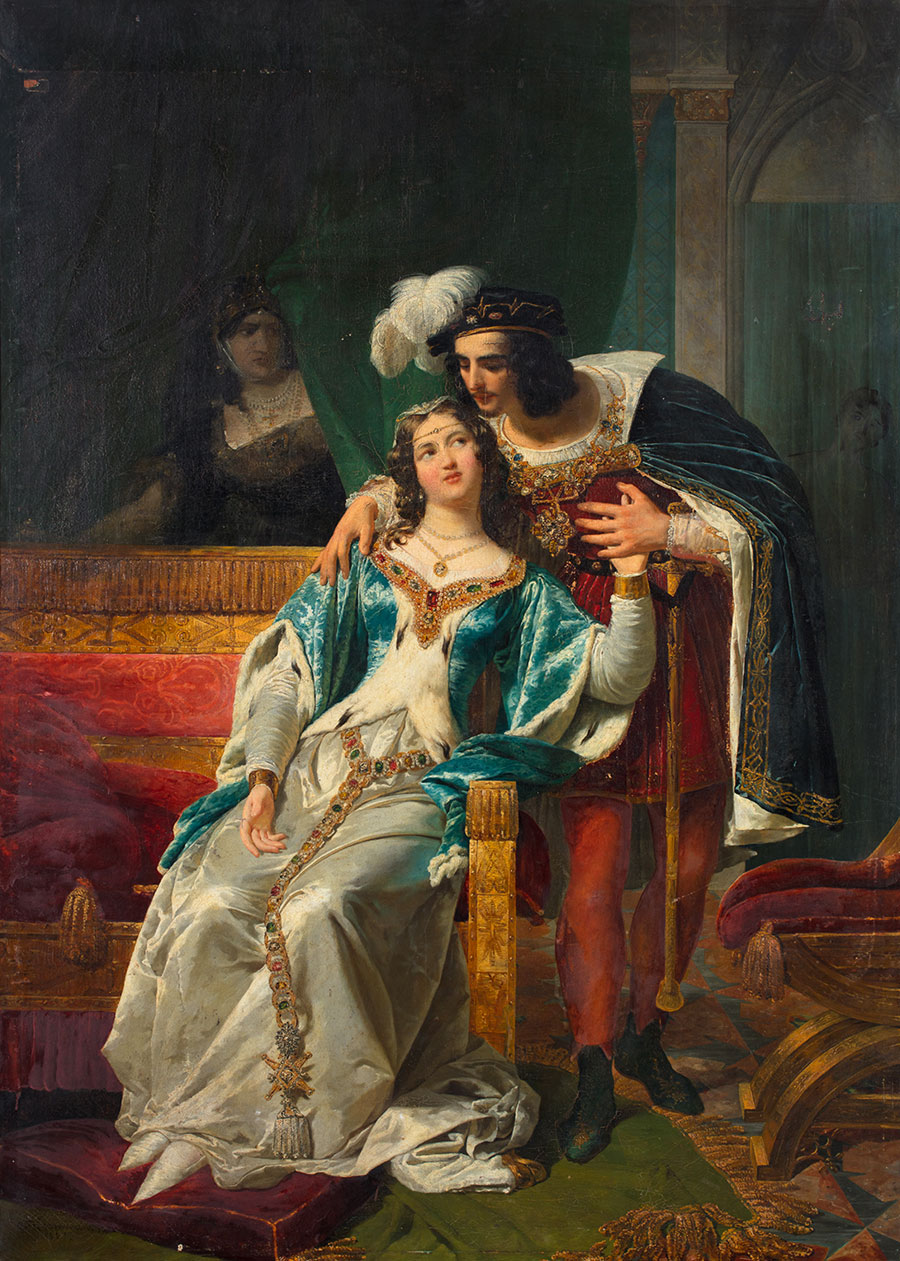This painting by Raymond Quinsac Monvoisin, from the collections of the Musée des Beaux-Arts d’Orléans, depicts King Henry II of England with his favorite mistress, Rosamund Clifford.
Infrared reflectography, carried out with the Apollo camera reveals a very detailed layout of the entire composition as well as a squaring, suggesting careful preliminary study.
Executed using a drypoint, a perspective construction drawing of the architecture and the structure of the tiles can be clearly seen in the foreground. Some of the lines reveal the use of a compass, ruler or square, while others are executed freehand in the manner of a sketch with traces of trial and error.
The outlines of the figures are sketched with nervous, discontinuous lines, while the features of the faces seem to have been made with a brush, using a fluid material.
Several pentimenti are visible; with the most significant changes made to the scene in the background. The composition was initially closed on the right by a figure observing the scene. The first location of the body and head, hidden behind a balustrade and a column with a capital, is clearly visible. The artist then changed the composition by placing another figure in the background, in a three-quarter view and a more central position. In the background, architectures were arranged differently and replaced in the painted phase by a large green curtain.
It should also be noted that the decorations on the cushions on the left of the picture were not yet foreseen at the stage of the underlying drawing, while other ornamental patterns (such as on the back of the bench) were specified in detail. Minor changes are also visible in the orientation of Henry’s left hand and feet, as well as the right hand of Rosamund.
From the false colour infrared image (IRFC) of the paint layer, we can assume the presence of certain pigments: the blue cloak worn by Rosamund is made of natural azurite and lead white, in purplish on the IRFC image. Henry’s cloak is made of azurite, probably with added black. The red visible on Henry’s cushions and shoes is made with vermilion, a pigment that appears orange under false colour. A cooler madder lake is present in his red tunic, which presents a deeper orange response. The blue in the background is probably a layer of azurite. The large curtain also in the background appears to be made of verdigris. The legs and armrests of the benches are made using yellow ochre. The carpet in the foreground contains malachite with yellow added. The skin tones are made with a pink layer of vermilion and white.
Raymond Quinsac Monvoisin, Rosamund Clifford and King Henry II of England, 1827, oil on canvas, Musée des Beaux-Arts d’Orléans.





